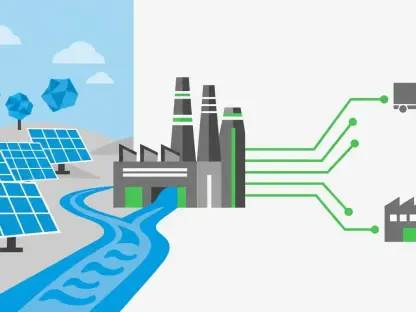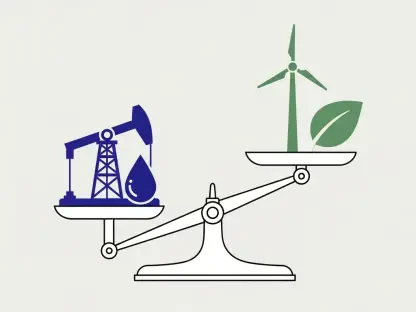The increasing financial pressures on Danish consumers due to heightened security expenditures by energy companies in Denmark are becoming a significant concern. The threat of cyberattacks and physical sabotage has led energy companies to invest heavily in security measures, with these costs likely to be passed down to customers through higher electricity prices. As energy companies grapple with emerging threats to critical infrastructure, the financial burden of these precautions is expected to escalate, eventually impacting the end consumers who might see a marked increase in their electricity bills.
Rising Security Costs in the Energy Sector
A recent survey conducted among 386 members of Green Power Denmark, the trade organization for the energy sector, revealed that 74 percent of participants have ramped up their security spending in the past year. This increase reflects a widespread recognition of the critical need to protect energy infrastructure from emerging threats. The effort to bolster security measures stems from a collective understanding within the industry that safeguarding vital energy resources is paramount amidst an environment fraught with increasing vulnerabilities. Consequently, businesses involved in energy production, distribution, and trade have uniformly agreed on the necessity of enhanced security measures.
The growing financial burden associated with these security investments is expected to be shifted to consumers, raising concerns about the future costs of electricity. While these measures are crucial for national security, they also present a looming challenge for Danish households, which might be compelled to bear these additional costs. The analogy likened to an insurance premium underscores society’s role in sharing the financial responsibilities tied to the heightened state of alert. It appears inevitable that the enhanced protection necessitated by the current threat landscape will come at a price, one that end consumers will have to accommodate.
Catalysts for Increased Security Spending
The urgency to strengthen security measures in Denmark’s energy sector was notably accelerated by a significant hacker attack in the spring of 2023. This cyberattack, presumed to be orchestrated by a state actor, targeted 22 companies within Denmark, highlighting the vulnerability of critical infrastructure. Although the attack was detected in time, preventing any significant damage, it underscored the potential risks and led to a renewed focus on cybersecurity. The event served as a stark reminder of the ever-present dangers lurking in cyberspace and acted as a catalyst for intensified security protocols.
Jørgen Christensen, Green Power Denmark’s technology director, emphasized that these increased costs are comparable to an insurance premium society must bear in facing escalating insecurity. By framing the additional expenses in this manner, he aims to normalize the acceptance of higher electricity bills as essential for enhanced security. The analogy posits that just as individuals pay premiums to protect against unforeseen personal risks, similarly, society must be willing to invest in protecting its critical infrastructure. This perspective underscores the notion that the safeguarding of crucial energy resources, though costly, is a non-negotiable requirement in the face of escalating threats.
Addressing Physical Threats to Infrastructure
Beyond cyber threats, there has been a growing apprehension over physical threats to energy infrastructure. The police intelligence service PET issued a warning in May about the increased risk of physical sabotage from Russia targeting both military and civilian facilities in Denmark. This warning aligns with reports of similar threats across Europe, amplified by the ongoing conflict in Ukraine. The heightened state of alert reflects the broader European context, wherein the geopolitical climate has rendered energy infrastructure a potential target. The tangible risks associated with physical sabotage are exacerbated by the visibility and critical nature of installations such as transformer stations and power plants.
Energy companies have responded by not only reinforcing their cybersecurity measures but also ramping up physical security around crucial installations such as transformer stations, wind turbines, and solar farms. Approximately 45 percent of the surveyed companies have escalated their spending on securing these physical facilities, indicating a holistic approach to addressing the multifaceted threat landscape. The enhanced protection efforts encompass a wide range of measures aimed at fortifying the physical premises against potential attacks. The emphasis on a comprehensive defense strategy underscores the realization that both digital and physical threats are intertwined components of the security paradigm. The proactive stance taken by the energy companies demonstrates an acute awareness of the diverse risks faced by critical infrastructure.
The Need for Clear Guidance from Authorities
Despite the proactive measures taken by energy companies, there is a clear call for more specific guidance from authorities regarding particular threats to physical infrastructure. Christensen articulated the industry’s frustration with the lack of detailed information, which hinders their ability to effectively safeguard their facilities. The existing signals from authorities indicate a larger, tangible physical threat, but the absence of precise information poses challenges in prioritizing and implementing appropriate security measures. While the general advisories highlight an elevated risk level, they fall short in providing actionable intelligence that could significantly bolster protective measures.
Energy companies seek clearer directives to enhance the effectiveness of their protection strategies. The current ambiguity in threat specifics hampers the ability of companies to allocate resources efficiently and develop targeted defenses. Clearer communication from authorities would bridge the information gap and enable more robust and tailored security measures. The industry’s call for enhanced cooperation and explicit directives reflects a fundamental need for synergy between public and private sectors in fortifying critical infrastructure. Effective collaboration is seen as a cornerstone in mitigating the complex array of threats that challenge the security of vital energy assets.
Financial Implications for Consumers
Danish consumers are feeling the pinch from increasing financial pressures as energy companies in Denmark boost their security expenditures. These heightened costs stem from the growing threat of cyberattacks and physical sabotage, which have compelled energy firms to heavily invest in enhanced security measures. Unfortunately, these expenses are likely to be transferred to customers through higher electricity prices.
Energy companies are navigating these emerging threats to critical infrastructure, and the financial burden of safety precautions is expected to rise. This escalation is projected to significantly impact the end consumers, who might face substantial increases in their electricity bills. As companies pour more resources into protecting their assets, the ripple effect will be felt in households across Denmark. Customers may find themselves shouldering the financial weight of ensuring the integrity and reliability of the nation’s energy supply, marking a potential shift in household budgets and economic planning for Danish families.









